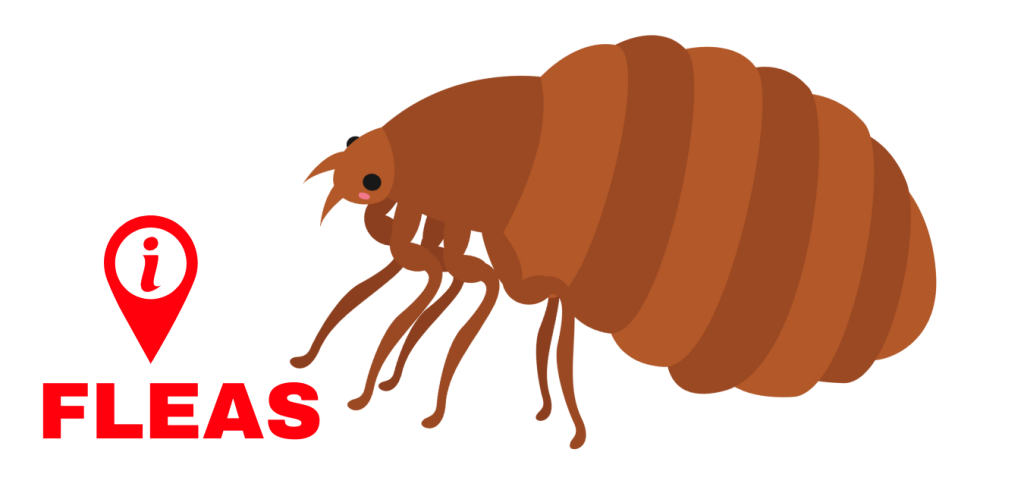
Fleas may be a growing problem in Australia. They can spread typhus disease, which occurs when flea bites become infected as a result of flea-faecal contamination.
Fleas are also known to transmit tapeworm larvae. Fleas are most notorious for transmitting bubonic plague from wild rodents to humans in some parts of the world. However, this is not known to occur in Australia.
The main flea species in Australia are:
- Cat flea
- Dog flea
- Human flea
Signs of a flea infestation
- Noticing little specs hopping on your or your pet’s bedding and crawling on your furniture, carpet, or curtains.
- Itching and small red on your feet, ankles and legs.
Flea life cycle
Fleas take four forms during their life cycle: egg, larva, pupae and adult.
This cycle can take from 2 weeks up to 8 months depending on temperature, humidity, food and the type of flea species.
This means Fleas can lay dormant in previously occupied spaces, awaiting new tenants/owners to unwittingly become their new food source.
Flea bites
When a food source is available, the flea will use its saw-like mandibles to cut through the skin on accessible parts of the body (for example, legs or feet). Flea saliva contains anticoagulants to keep its host’s blood flowing so they can feed easily.
Symptoms of flea bites include:
- extreme itchiness at the bite site
- a red, swollen lump that develops within 30 minutes of first being bitten
- a blister or small wound at the site of the lump, within 24 hours of being bitten
- bites are mainly concentrated on the legs and feet
- secondary infections can be caused by scratching the bite site, allowing bacteria to enter.
Flea bites and your pets
Dogs and cats are common hosts for fleas to feed. Pets may be irritated by flea bites, causing them to scratch a considerable amount more than usual.
How to check for fleas:
- Check your pet for pale gums, this could be a result of blood loss.
- If you notice bald patches or scabs on your pet’s skin
- If you notice tapeworms in your pet’s stool
- Part the fur, particularly around the ears and rump.
- Look for the fleas themselves or for flea faeces. Flea faeces look like tiny dark specks.
TIP:
To help identify if your pet has become a host:
Place a few of the specks on a piece of lightly dampened white tissue. Flea faeces will stain the tissue with a ring of blood.
Please be sure to use gloves or wash your hands with warm soapy water.


